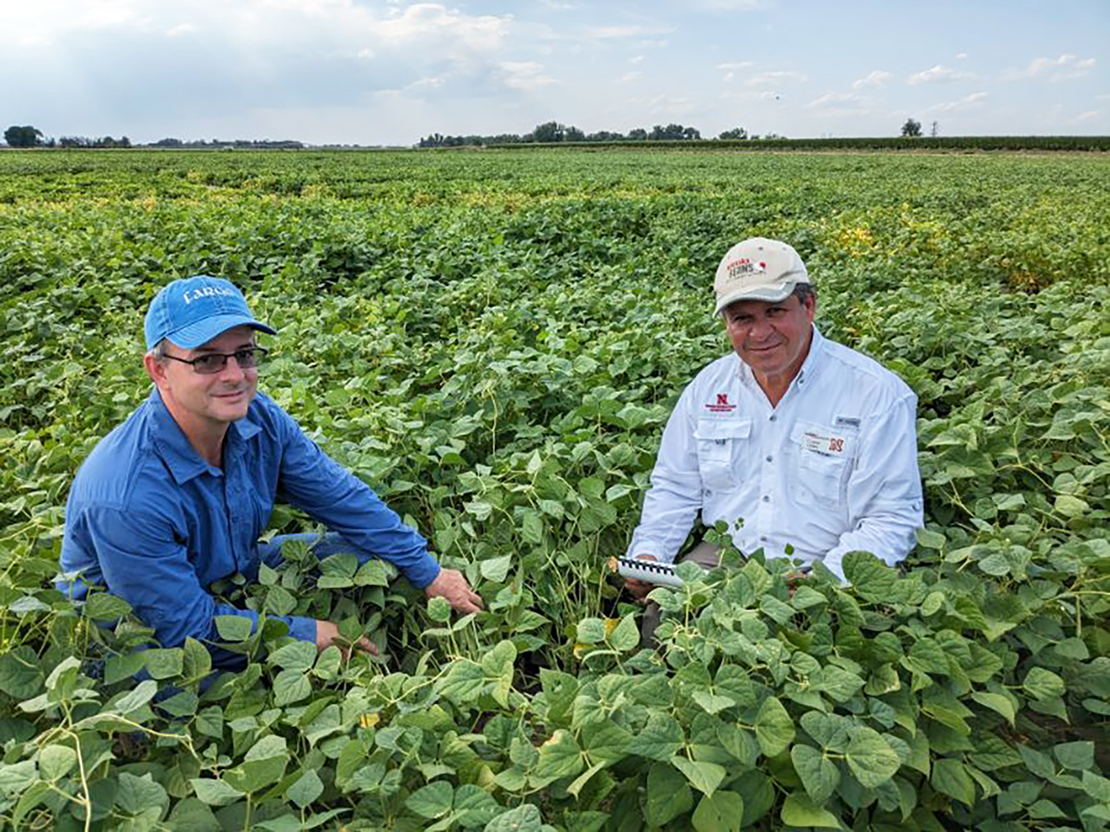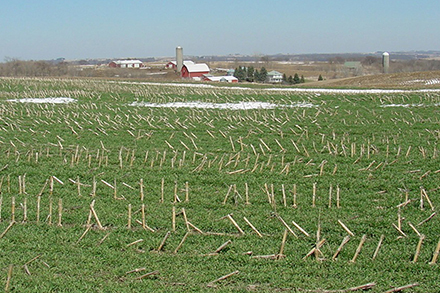In what is almost an annual visit to Nebraska, Timothy Porch, research geneticist at U.S. Department of Agriculture-Agricultural Research Service in Puerto Rico, scouted the dry edible bean plots at the University of Nebraska-Lincoln, Panhandle Research Extension and Education Center, in Scottsbluff.
“I visit Carlos Urrea (Nebraska Extension dry bean breeding specialist) almost annually because we have collaborative research work together. We improve (dry edible) beans primarily for drought tolerance, heat, and multiple disease resistance.”
In their research studies, Porch and Urrea send beans back and forth between Nebraska and Puerto Rico. This is called shuttle breeding, and it can double the progress of their studies. So, when Nebraska is in winter, Puerto Rico is in its growing season, and vice versa.
One of the promising bean lines they are working on is with tepary beans. Tepary beans are native to areas in the Sonora Desert between Arizona, Mexico, and New Mexico. The beans are a different species than the common bean, which includes most dry bean varieties like northern and pinto beans, but they are closely related.
Porch has been working with tepary beans for more than 10 years. Urrea and Santos Barrera, a previous UNL graduate student, had been working with moving genes from the tepary to the common bean in the past few years.
“They have identified bridging parents for transferring genes for heat and drought. We looked at some of the lines recently (Aug. 23), and some have promise. We’re gradually moving those into more and more commercial types. It’s a longer process cause they’re very distant genetically we have to move those traits into commercial beans, but they look very good,” Porch said.
The interspecific lines are something that has just been developed between the two species. The team used lines from a few different programs to develop the lines, creating a set of 192 lines from different sources, but all have tepary bean components.
“We’ll be genotyping, which means we’re doing sequencing on each line and testing for common bacterial blight, drought response, and root rot resistance. We’ll also test the seed elemental composition for protein, zinc, iron, and other elementals for nutritional value,” Porch said.
The tepary beans are just one of many species growing in the collaborative nurseries, Urrea coordinates. The many cooperative nurseries growing dry beans are a key component of the many improvements in the U.S. in both public and private sectors. The companies or institutions submit their best lines to be tested in different environments, gaining knowledge of where beans are best adapted and the target environments for production.




